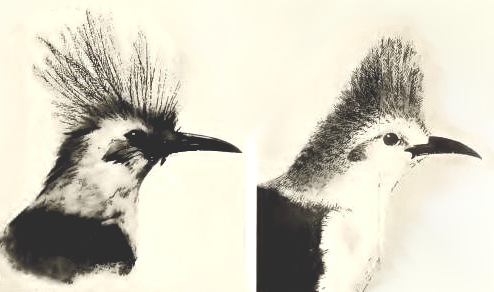Hoopoe Starling
We’re back to birds now that the new year is over. Without further ado, I give you the Hoopoe Starling.

The Hoopoe Starling also goes by the names Bourbon Crested Starling, Huppe, Crested Starling, or Réunion Starling. The Hoopoe Starling was discovered in 1669 and first described 1783 by the Dutch Naturalist Pieter Boddaert, who found it in its home on the island of Réunion in the Indian Ocean, just east of Madagascar.

It was characterized by it’s lovely crest, a white head, neck, and abdomen, and long yellow legs. Its wings were grey-brown. They were a little larger than young pigeons when full-grown.

The age of exploration brought to many small islands new invasive species of predator to small islands that had previously had very few, or even none. Many island-dwelling birds became extinct due to the introduction of rats, cats, feral goats and pigs, and other animals to their homes. Many were also not used to fleeing from predators, and were therefore extremely easy to hunt. The French naturalist François Pollen wrote in 1868:
The old Creoles told me that, in their youth, these birds were still common, and that they were so stupid that one could kill them with sticks.
The main reason for its extinction was the introduction of rats. Along with rats, settlers also introduced an invasive species of bird called the Common Myna for the purpose of combating locusts on the island, which also caused a drop in the population. Hunting finished the bird off. This apparently tasty and easy-to-hunt bird became increasingly rare during the 1830s. The last known specimen was shot in 1837.
One specimen is currently in the Dutch National Natural History Museum, which not only has an excellent index of extinct birds, but also features neat 3-D videos of the specimens in their collection. Take a look.

